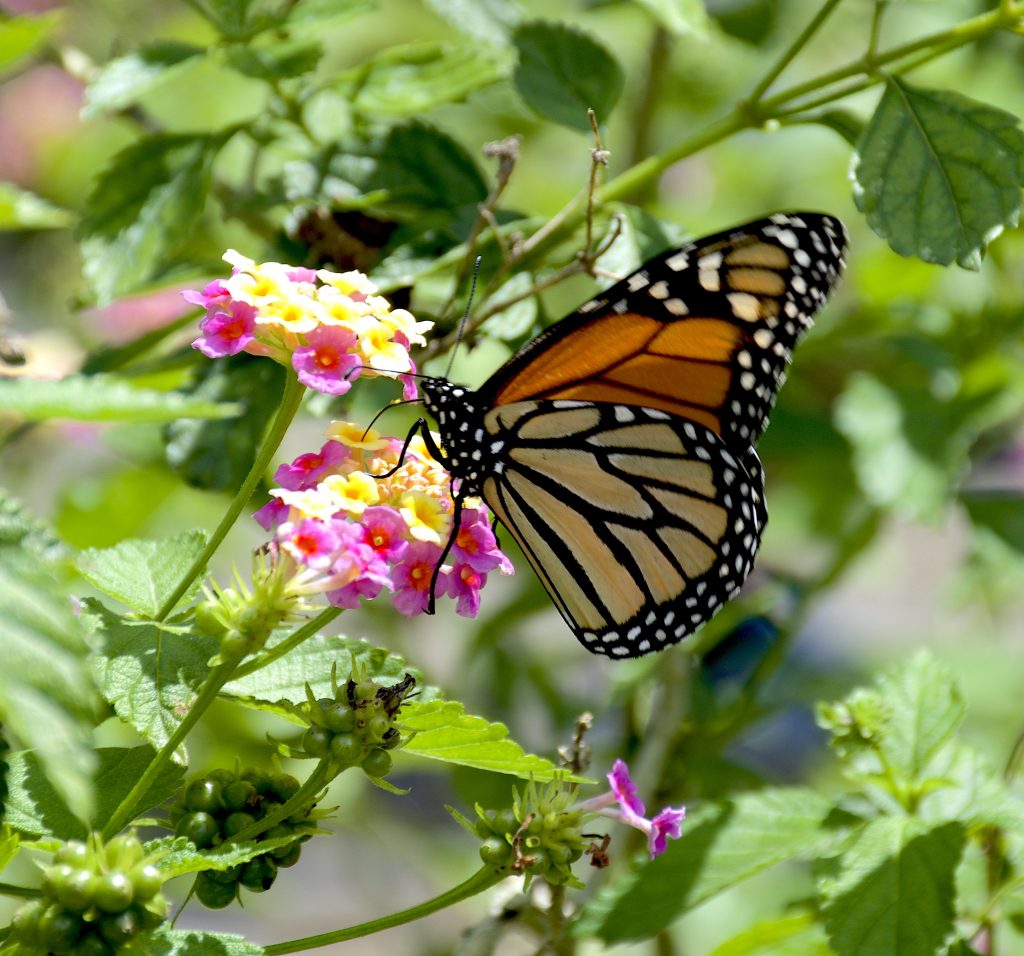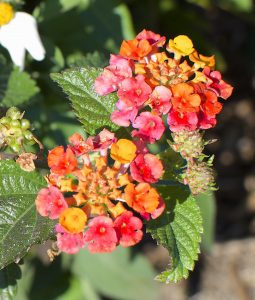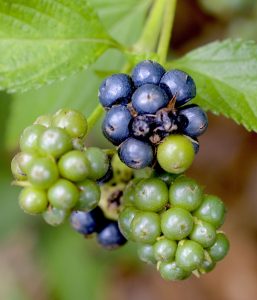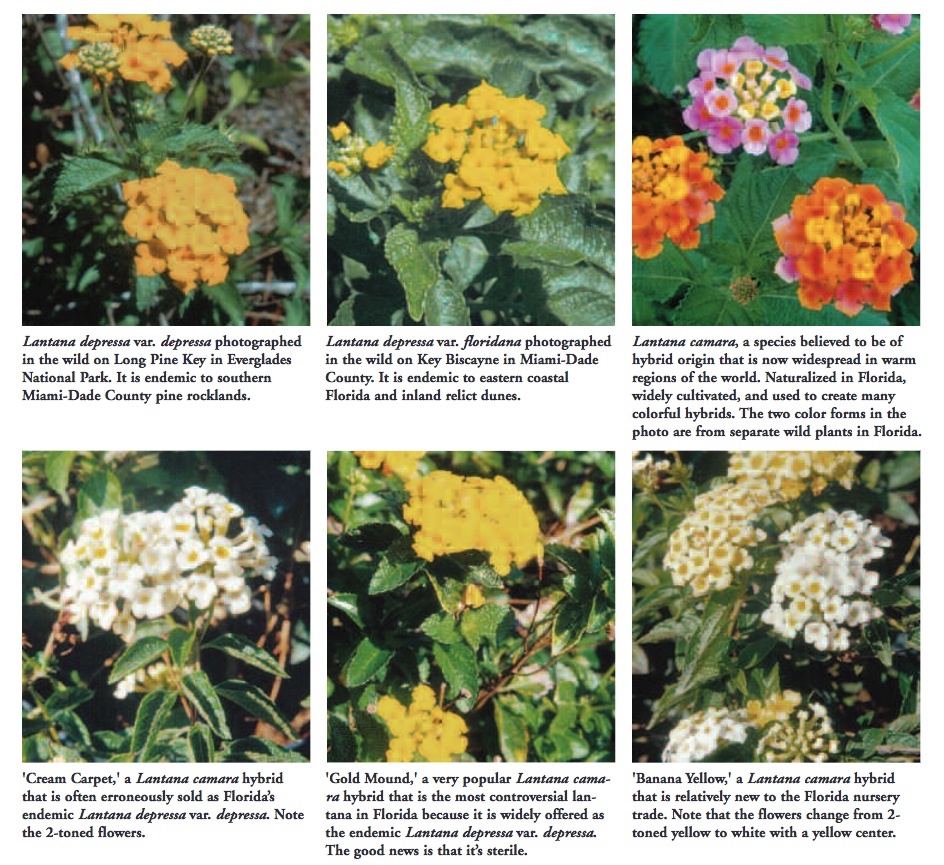
Butterfly on Lantana camara blossoms. Photo by Green Deane
Lantana camara: Much Maligned Nibble
Ask anyone who has heard of the Lantana camara and they will tell you it is poisonous. And they are right. Unripe berries have killed children and the foliage has killed livestock. But listen to Professor Julia Morton who was the leading expert in Florida on toxic plants.

Lantana camara blossoms are multi-colored. Photo by Green Deane
In her book “Plants That Poison People in Florida” she states: “The ripe fruit are eaten by natives wherever the plant grows.” She wrote that in 1995. A 1996 study by Herzog said the same thing (Coppens d’Eeckenbrugge & Libreros Ferla 2000, TAMREC, 2000). On the other hand the University of Texas at Austin says the ripe berries are toxic and Delena Tull in her 1999 book about plants in Texas writes: “Though some previous publications assert that the ripe fruit is edible, experimental studies show that both ripe and unripe fruit are potentially lethal.”
So there you have it. Two views of the Lantana camara. I’ve eaten ripe berries as a trail-side nibble and I am still here. They are very sweet, crunchy and slightly aromatic. I have not made a pie nor have I consumed more than a handful at a time but they have posed no problem thus far. However, they can make you more light sensitive so it is a berry best tried one at a time until you know you are not effected by it.

Unripe and ripe Lantana camara berries. Blue is ripe. Photo by Green Deane
Just so there is no confusion. Ripe means deep blue or black berries. Not green or partially green. There is no doubt that green Lantana camara berries have killed children and sickened adults. Conversely, a mild tea made from the leaf is still used in the Caribbean Islands to ease cold symptoms. The ripe berries are used to make jam, jellies, pies and cordials in Ecuador.
Lantana camara (lan-TAY-na ca-MAR-ah) has had a bit of linguistic history. Virgil (70-19 BC) called a plant lenta viburna, or flexible viburnum, now called V. lantana. It was used by Linnaeus for the genus name for these plants. Camara is a local South American name for the plant. Lantana grows from North Carolina west to California and points south.
A native of the West Indies or perhaps introduced from South American, it is listed as one of the worst weeds in the world. Butterflies, however, love it and it is a must-have bush in every butterfly garden. It’s the birds that spread the seeds around. It is also a cousin to the American Beautyberry.
Lantana camara leaves are also toxic to dog livers.
Green Deane’s “Itemized” Plant Profile
IDENTIFICATION: A persistent evergreen shrub to 6 ft (1.8 m) high, 8 feet in width. Leaves are 2-5 inches long by 1-2 inches wide with rounded tooth edges and a textured surface. Stems and leaves covered with rough hairs. When leaves are crushed they smell similar to cat urine. Flowers, small, in clusters typically 1-2 inches across. Flowers year round, color range from white to yellow, orange to red, pink to rose in unlimited combinations. Not all one color. Flowers often change color as they age.
Note: L. camara has blossoms of different colors, yellow and orange, pink and red. L. depressa has yellow blossoms only, or, white blossom with a yellow throat: No red, pink or orange blossoms. I have not found any reference as to the edibility of ripe L. depressa berries.
TIME OF YEAR: Fruits can ripen all year but are heavy in the early summer. Fruit when ripe is purple/black.
ENVIRONMENT: Waste places to landscaping to a potted plant. Prefers full sun.
METHOD OF PREPARATION:D ark ripe berries out of hand. They have a flavor similar to a cross between black currants and cherries. They can be used to make jams, jellies, pies, and cordials. The fruits can be used to produce a light purple dye. The leaves can be used to polish wood.
From an article by Roger Hammer:

Various Lantana blossoms by species.

